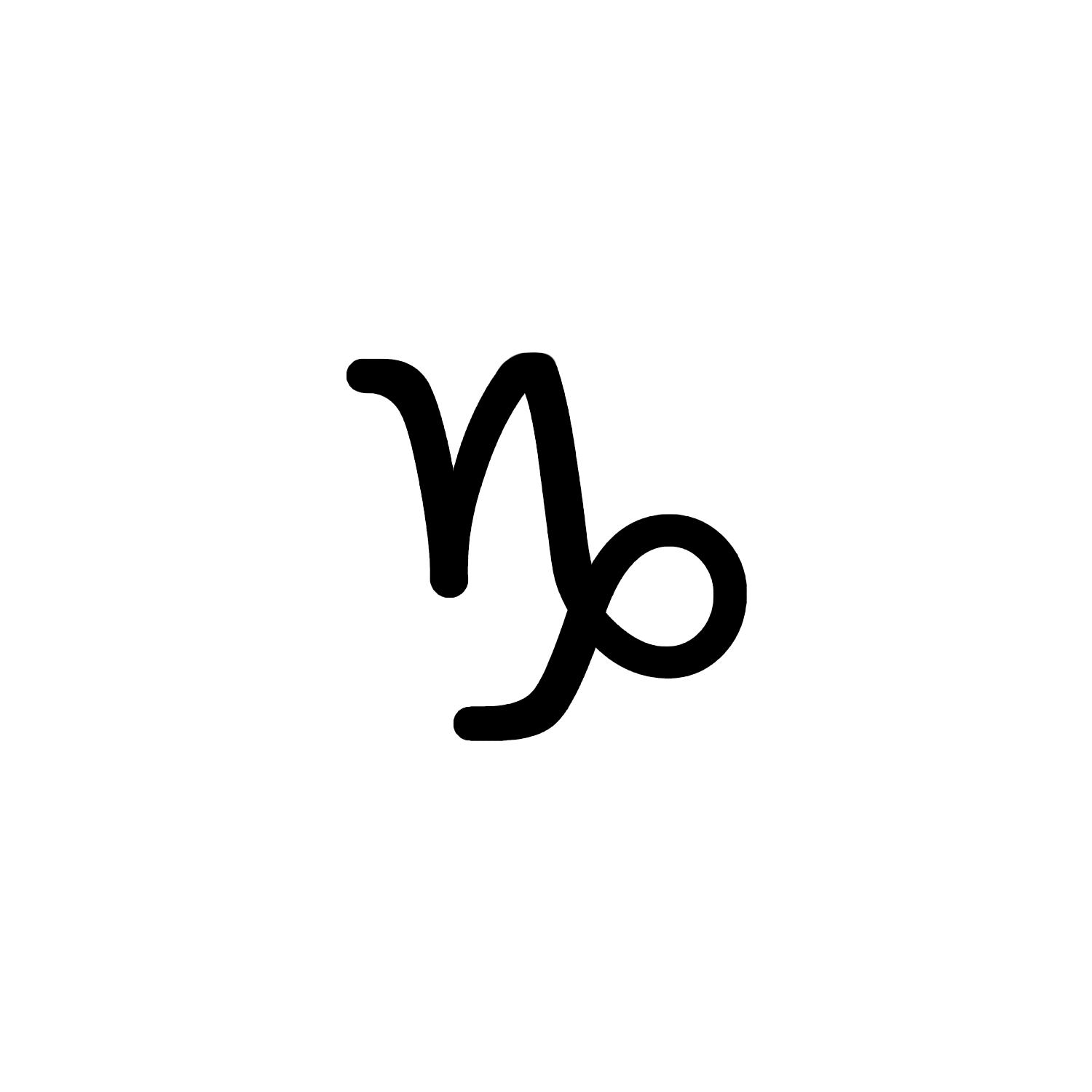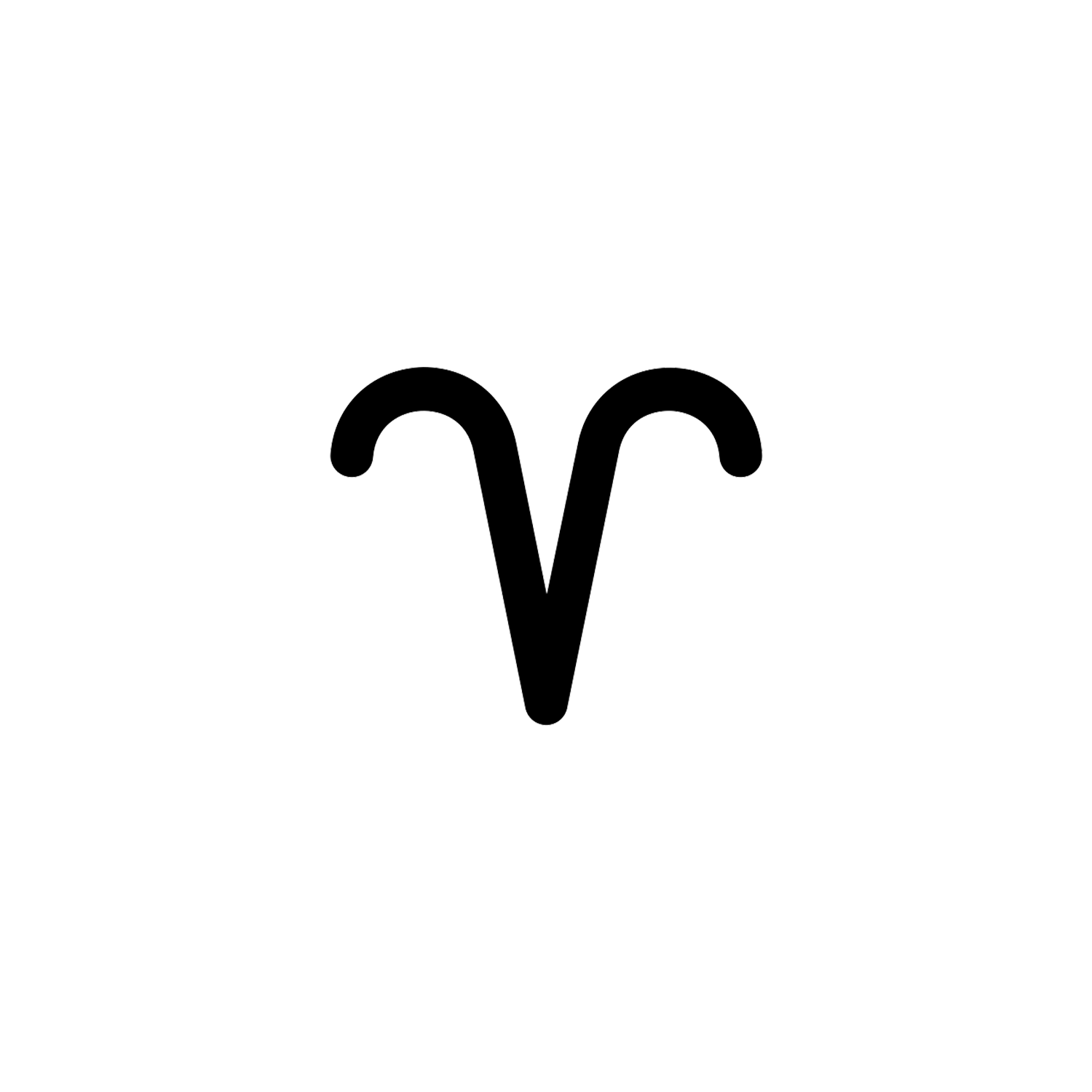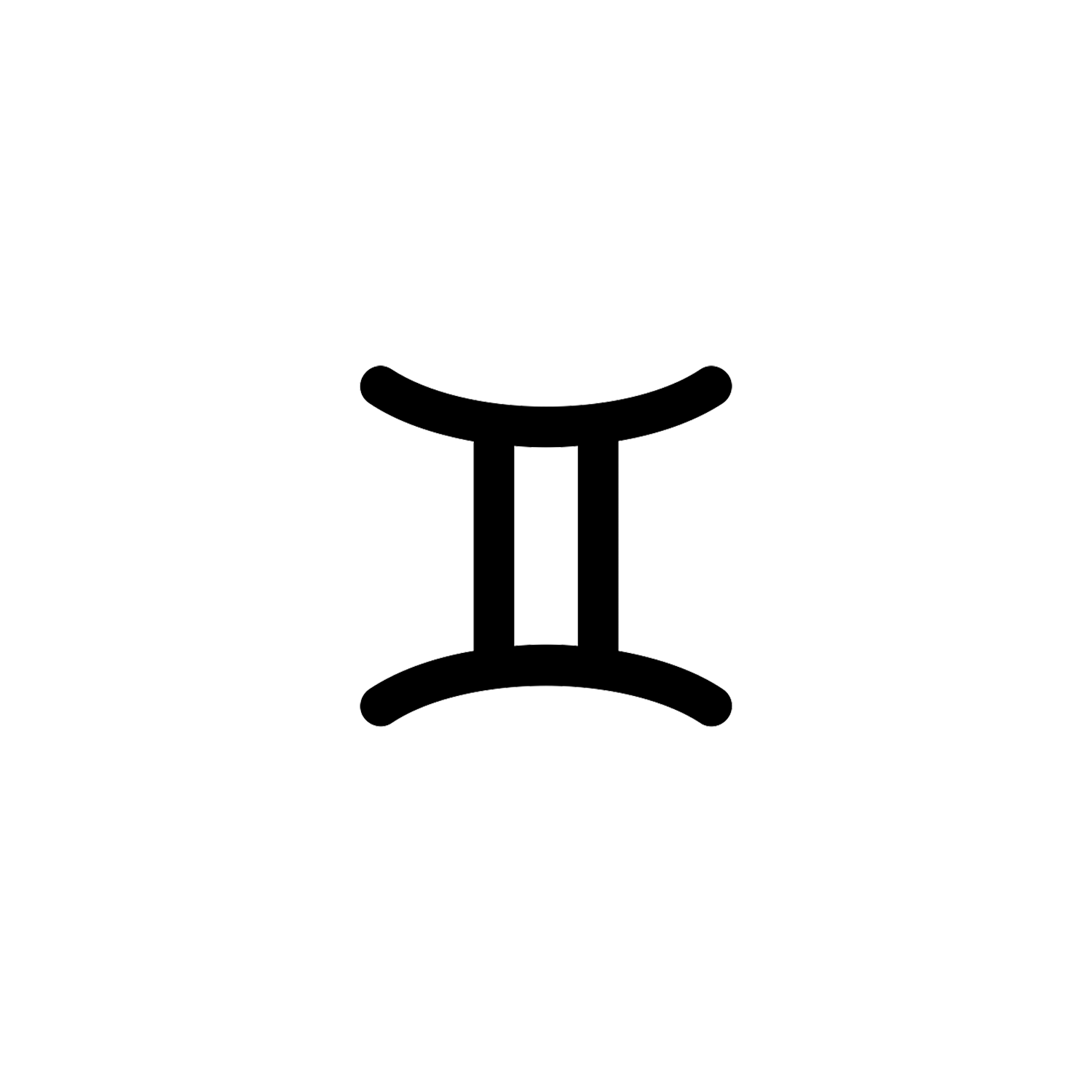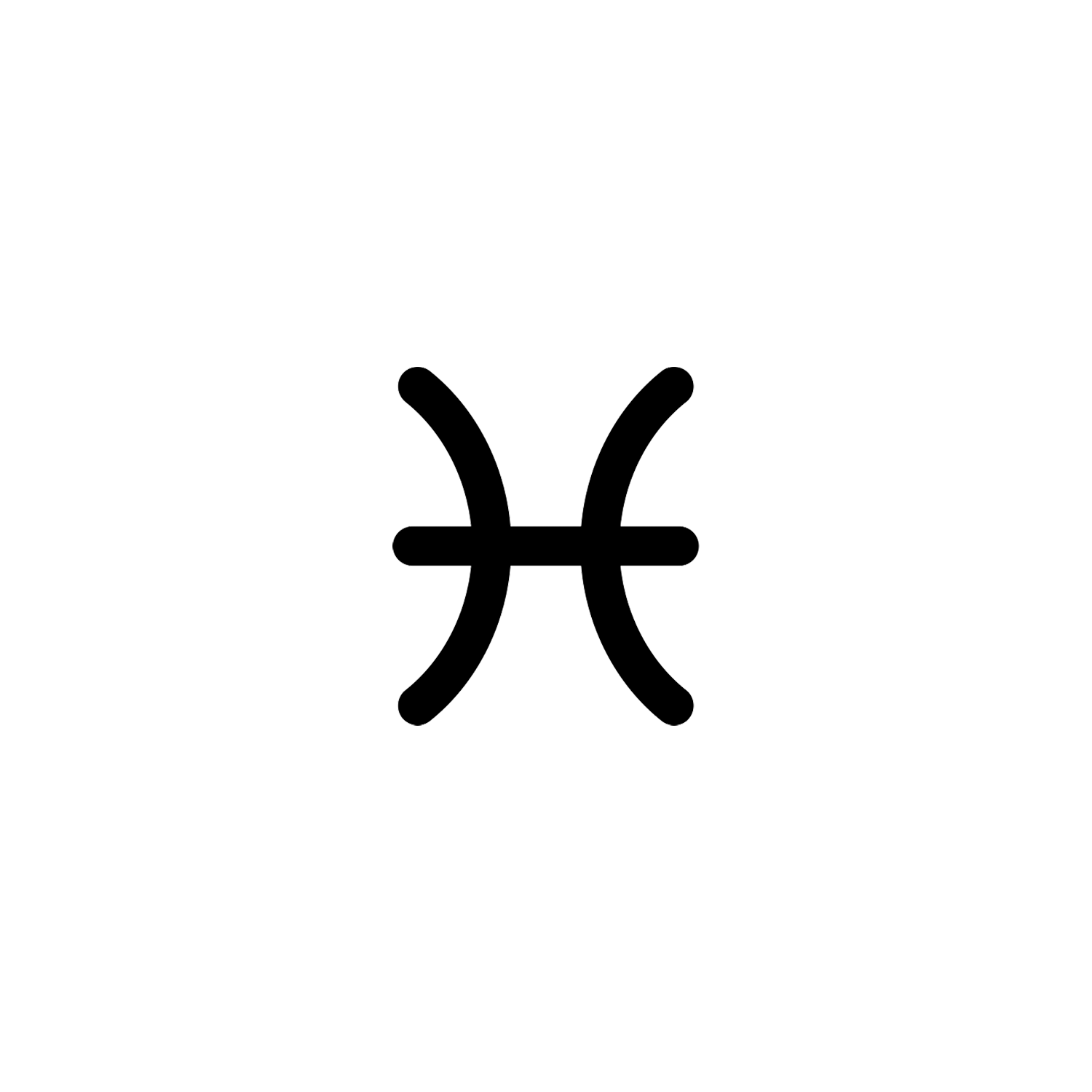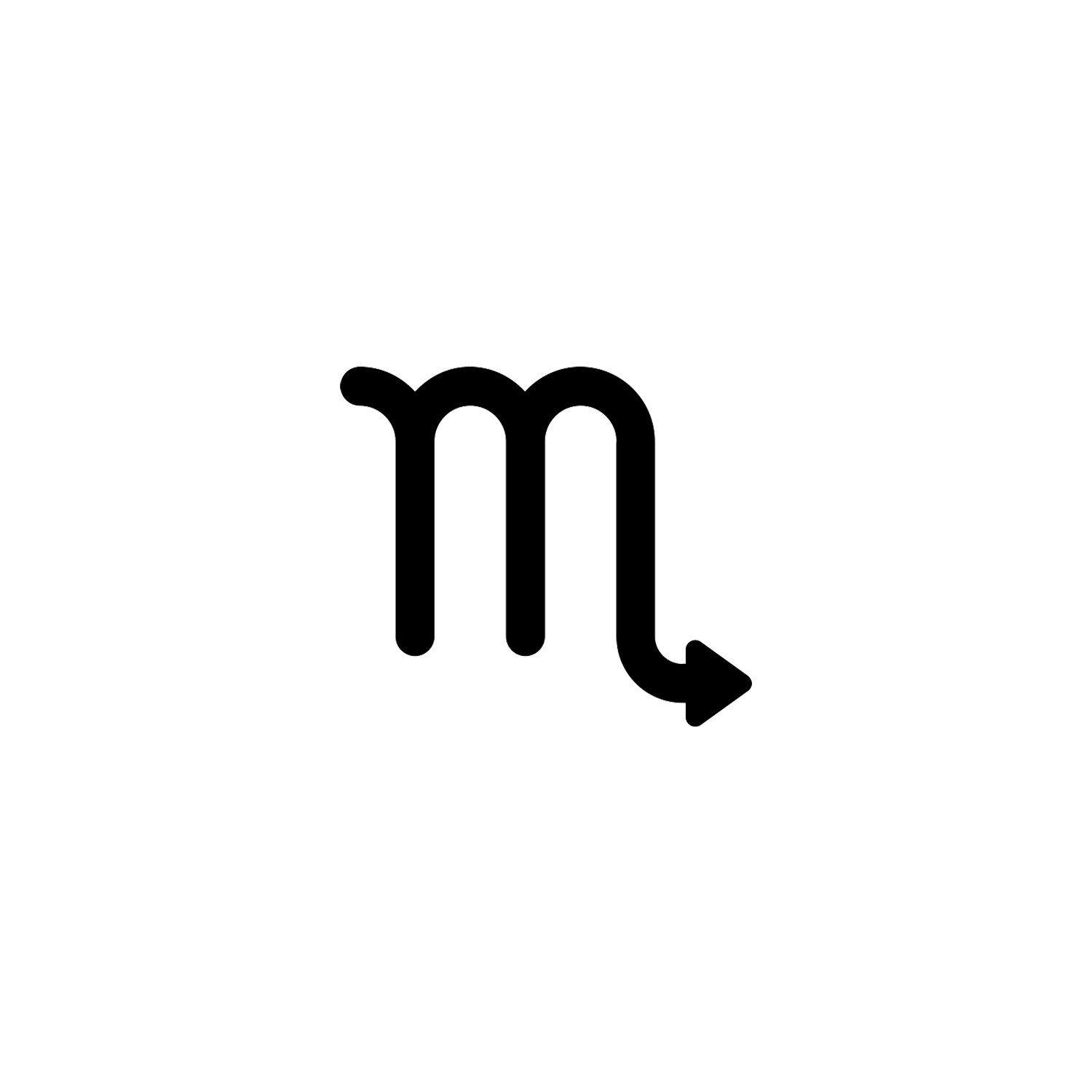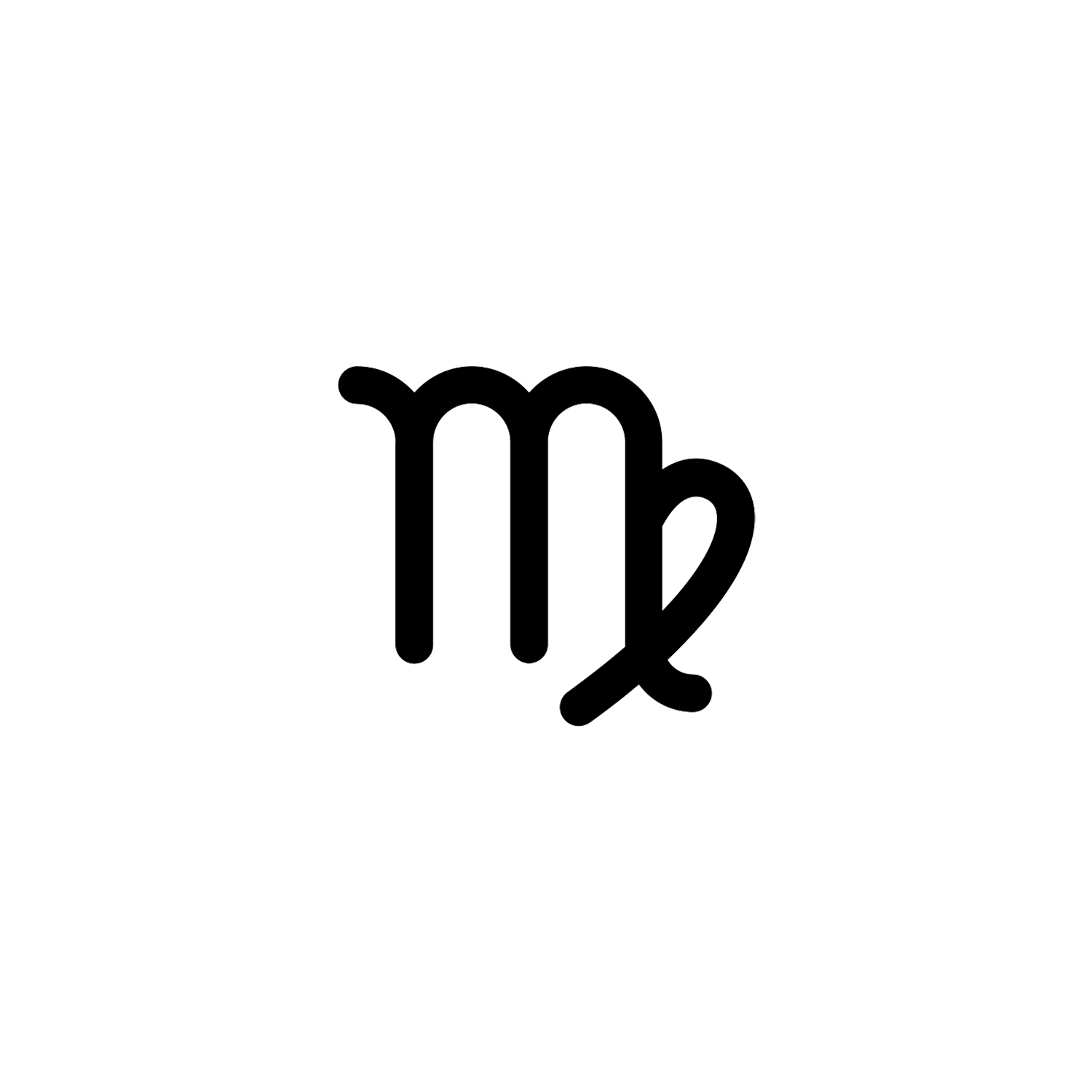Taurus
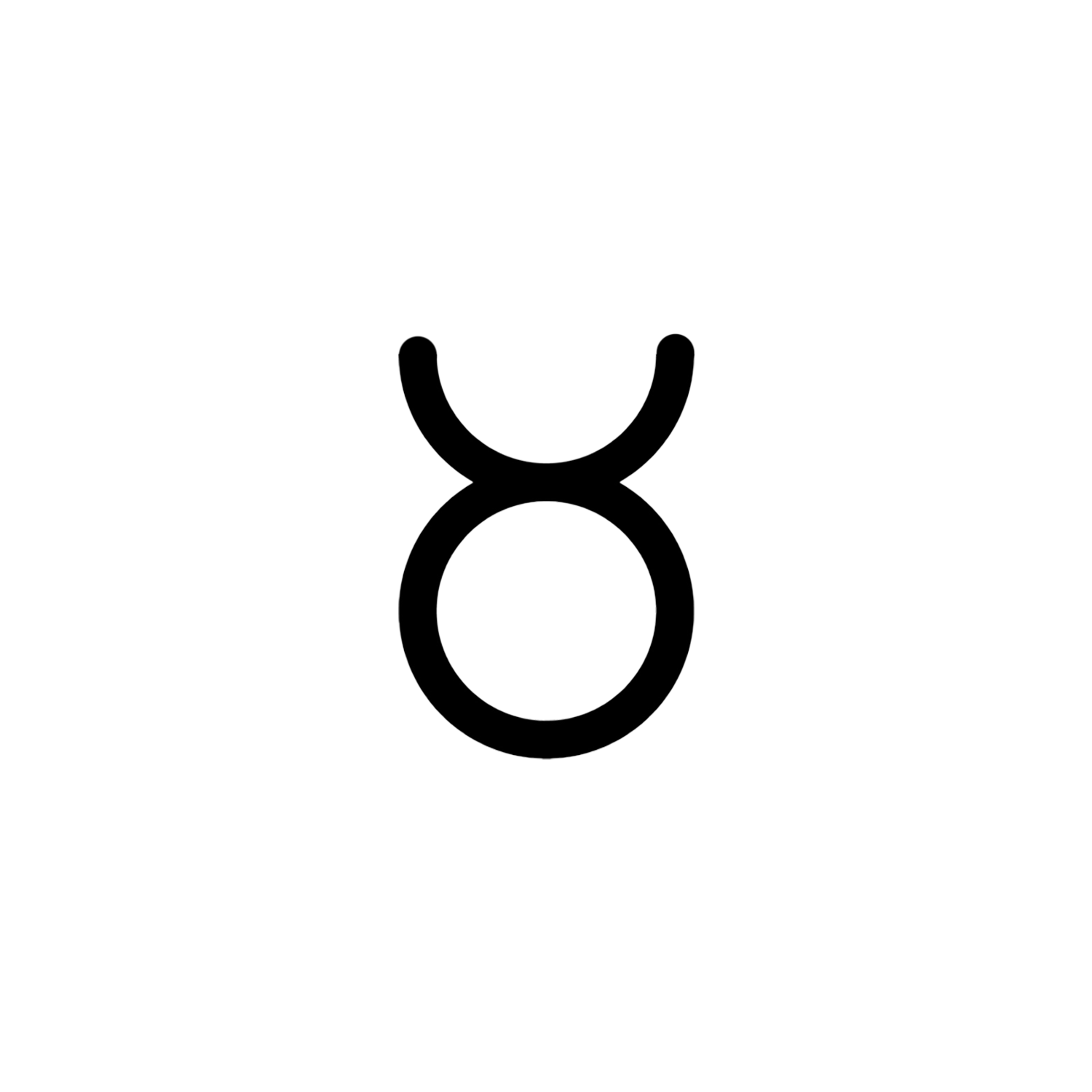

Taurus
The second astrological sign in the zodiac.
Overview
Taurus (Ancient Greek: Ταῦρος, romanized: Taûros, Latin for “bull”) is the second astrological sign in the modern zodiac. It spans from 30° to 60° of the zodiac. This sign belongs to the Earth element or triplicity, as well as a fixed modality, quality, or quadruplicity.
It is a Venus-ruled sign, the Moon is in its exaltation here at exactly 3°. The Sun transits this sign from approximately April 19 until May 20 in western astrology.[1] Taurus is one of the three earth signs, alongside Capricorn and Virgo. Taurus’s opposite sign is Scorpio.
The sign of Taurus is associated with several myths and bull worship from several ancient cultures. It was the first sign of the zodiac established among the Mesopotamians, who called it “The Great Bull of Heaven,” as it was the constellation through which the Sun rose on the vernal equinox at that time,[2] that is the Early Bronze Age, from about 4000 BC to 1700 BC.
Earth is the element associated with Taurus, and alongside Virgo and Capricorn, it forms the Earth Triplicity.

Cattle are prominent in some religions and mythologies. As such, numerous peoples throughout the world have at one point in time honored bulls as sacred. In the Sumerian religion, Marduk is the “bull of Utu”. In Hinduism, Shiva’s steed is Nandi, the Bull. The sacred bull survives in the constellation Taurus. The bull, whether lunar as in Mesopotamia or solar as in India, is the subject of various other cultural and religious incarnations as well as modern mentions in New Age cultures.
The Sumerian guardian deity called lamassu was depicted as hybrids with bodies of either winged bulls or lions and heads of human males. The motif of a winged animal with a human head is common to the Near East, first recorded in Ebla around 3000 BCE. The first distinct lamassu motif appeared in Assyria during the reign of Tiglath-Pileser II as a symbol of power.
In Ancient Egypt multiple sacred bulls were worshiped. A long succession of ritually perfect bulls were identified by the god’s priests, housed in the temple for their lifetime, then embalmed and buried.
Among the Twelve Olympians, Hera’s epithet Bo-opis is usually translated “ox-eyed” Hera, but the term could just as well apply if the goddess had the head of a cow, and thus the epithet reveals the presence of an earlier, though not necessarily more primitive, iconic view. (Heinrich Schlieman, 1976) Classical Greeks never otherwise referred to Hera simply as the cow, though her priestess Io was so literally a heifer that she was stung by a gadfly, and it was in the form of a heifer that Zeus coupled with her. Zeus took over the earlier roles, and, in the form of a bull that came forth from the sea, abducted the high-born Phoenician Europa and brought her, significantly, to Crete.
A Roman mystery cult in which a sacrificial bull played a role was that of the 1st–4th century Mithraic Mysteries. In the so-called “tauroctony” artwork of that cult (cultus), and which appears in all its temples, the god Mithras is seen to slay a sacrificial bull. Although there has been a great deal of speculation on the subject, the myth (i.e. the “mystery”, the understanding of which was the basis of the cult) that the scene was intended to represent remains unknown. Because the scene is accompanied by a great number of astrological allusions, the bull is generally assumed to represent the constellation of Taurus. The basic elements of the tauroctony scene were originally associated with Nike, the Greek goddess of victory.

Astrology
In Western astrology, the polarity divides the zodiac in half and refers to the alignment of a sign’s energy as either positive or negative, with various attributes associated to them as a result.[3]
Positive polarity signs, also called active, yang, expressive, or masculine signs, are the six odd-numbered signs of the zodiac: Aries, Gemini, Leo, Libra, Sagittarius, and Aquarius. Positive signs make up the fire and air triplicities.[4][5]
Negative polarity signs, also called passive, yin, receptive, or feminine signs,[6] are the six even-numbered signs of the zodiac: Taurus, Cancer, Virgo, Scorpio, Capricorn, and Pisces. Negative signs make up the earth and water triplicities.[7]

Astronomy
Taurus (Latin for “the Bull”) is one of the constellations of the zodiac and is located in the northern celestial hemisphere. Taurus is a large and prominent constellation in the Northern Hemisphere’s winter sky. It is one of the oldest constellations, dating back to the Early Bronze Age at least, when it marked the location of the Sun during the spring equinox. Its importance to the agricultural calendar influenced various bull figures in the mythologies of Ancient Sumer, Akkad, Assyria, Babylon, Egypt, Greece, and Rome. Its old astronomical symbol resembles a bull’s head.
A number of features exist that are of interest to astronomers. Taurus hosts two of the nearest open clusters to Earth, the Pleiades and the Hyades, both of which are visible to the naked eye. At first magnitude, the red giant Aldebaran is the brightest star in the constellation. In the northeast part of Taurus is Messier 1, more commonly known as the Crab Nebula, a supernova remnant containing a pulsar. One of the closest regions of active star formation, the Taurus-Auriga complex, crosses into the northern part of the constellation. The variable star T Tauri is the prototype of a class of pre-main-sequence stars.

The identification of the constellation of Taurus with a bull is very old, certainly dating to the Chalcolithic, and perhaps even to the Upper Paleolithic. Michael Rappenglück of the University of Munich believes that Taurus is represented in a cave painting at the Hall of the Bulls in the caves at Lascaux (dated to roughly 15,000 BC), which he believes is accompanied by a depiction of the Pleiades.[8][9] The name “seven sisters” has been used for the Pleiades in the languages of many cultures, including indigenous groups of Australia, North America and Siberia. This suggests that the name may have a common ancient origin.[10]
Taurus marked the point of vernal (spring) equinox in the Chalcolithic and the Early Bronze Age, from about 4000 BC to 1700 BC, after which it moved into the neighboring constellation Aries.[11] The Pleiades were closest to the Sun at vernal equinox around the 23rd century BC. In Babylonian astronomy, the constellation was listed in the MUL.APIN as GU4.AN.NA, “The Bull of Heaven”.[12] Although it has been claimed that “when the Babylonians first set up their zodiac, the vernal equinox lay in Taurus,”[13] there is a claim that the MUL.APIN tablets indicate[12] that the vernal equinox was marked by the Babylonian constellation known as “the hired man” (the modern Aries).[14]

In the Old Babylonian Epic of Gilgamesh, the goddess Ishtar sends Taurus, the Bull of Heaven, to kill Gilgamesh for spurning her advances.[15] Enkidu tears off the bull’s hind part and hurls the quarters into the sky where they become the stars we know as Ursa Major and Ursa Minor. Some locate Gilgamesh as the neighboring constellation of Orion, facing Taurus as if in combat,[16] while others identify him with the sun whose rising on the equinox vanquishes the constellation. In early Mesopotamian art, the Bull of Heaven was closely associated with Inanna, the Sumerian goddess of sexual love, fertility, and warfare. One of the oldest depictions shows the bull standing before the goddess’ standard; since it has 3 stars depicted on its back (the cuneiform sign for “star-constellation”), there is good reason to regard this as the constellation later known as Taurus.[17]
The same iconic representation of the Heavenly Bull was depicted in the Dendera zodiac, an Egyptian bas-relief carving in a ceiling that depicted the celestial hemisphere using a planisphere. In these ancient cultures, the orientation of the horns was portrayed as upward or backward. This differed from the later Greek depiction where the horns pointed forward.[18] To the Egyptians, the constellation Taurus was a sacred bull that was associated with the renewal of life in spring. When the spring equinox entered Taurus, the constellation would become covered by the Sun in the western sky as spring began. This “sacrifice” led to the renewal of the land.[19] To the early Hebrews, Taurus was the first constellation in their zodiac and consequently it was represented by the first letter in their alphabet, Aleph.[20]
In Greek mythology, Taurus was identified with Zeus, who assumed the form of a magnificent white bull to abduct Europa, a legendary Phoenician princess. In illustrations of Greek mythology, only the front portion of this constellation is depicted; this was sometimes explained as Taurus being partly submerged as he carried Europa out to sea. A second Greek myth portrays Taurus as Io, a mistress of Zeus. To hide his lover from his wife Hera, Zeus changed Io into the form of a heifer.[21] Greek mythographer Acusilaus marks the bull Taurus as the same that formed the myth of the Cretan Bull, one of The Twelve Labors of Heracles.[22]
In Buddhism, legends hold that Gautama Buddha was born when the full moon was in Vaisakha, or Taurus.[23]
Buddha’s birthday is celebrated with the Wesak Festival, or Vesākha, which occurs on the first or second full moon when the Sun is in Taurus.[24]
Differences between Astrology and Astronomy
Astrological signs are now only used in astrology to tell fortunes and describe people’s characters. Zodiac constellations are the subject of astronomy. Previously, they marked the passage of time and the seasons for ancient people and helped create calendars. Even now, they are used for marine navigation and astronomical observations. For instance, they are especially useful for amateur astronomers as reference points to locate planets.
Astrology is a pseudoscience.[25] Scientific investigations of the theoretical[26] basis and experimental verification of claims[27] have shown it to have no scientific validity or explanatory power. More plausible explanations for the apparent correlation between personality traits and birth months exist, such as the influence of seasonal birth in humans.
The zodiac signs’ dates are now about a month ahead of when the Sun meets the corresponding constellations. These dates were established more than two thousand years ago, but today things changed. For example, Aries now meets the Sun around April 19 (the exact date depends on the year and your timezone) instead of the astrological date of March 21. So, most people who think of themselves as Aries were born when the Sun was in Pisces.
The reason for this time shift is the axial precession of the Earth. Our planet is like a spinning top: it’s flattened at the poles and bulges at the equator, pulled by the Moon and Sun. So, it wobbles as it spins, tracing a cone of 23.5° radius with its axis. The wobble is called the precession of the Earth’s axis, or the precession of the equinoxes. Each spin lasts one day, but each gyration around the cone takes 25,800 years. The movement slowly alters the view of the zodiac from the Earth, making the constellations appear to slide to the east about 1° per human lifetime.
Moreover, just as in ancient times, now the Sun passes through the 13th constellation Ophiuchus that we mentioned above. So, no zodiac constellation meets the Sun from around November 30 to December 17, but, in astrology, these days belong to the sign Sagittarius.
It’s the astronomical view of things. Astrologers defend themselves by saying that they use the tropical zodiac, which is fixed to seasons, not the position of constellations. So, it’s your choice to believe whether you are Aries or Pisces, Sagittarius or Ophiuchus.

There are twelve constellations that roughly correspond to the traditional zodiac signs and are recognized as members of the zodiac family: Aries, Taurus, Gemini, Cancer, Leo, Virgo, Libra, Scorpius, Sagittarius, Capricornus, Aquarius, Pisces.
They are called “zodiac” on behalf of tradition. Beyond that, there is no reason why they are grouped this way.
Astrologers say that during the dates of a zodiac sign, the Sun is “in” the corresponding constellation. Over a year, the Sun regularly visits 13 constellations in the sky: Capricornus, Aquarius, Pisces, Aries, Taurus, Gemini, Cancer, Leo, Virgo, Libra, Scorpius, Sagittarius, and Ophiuchus. The last one doesn’t have its traditional zodiac sign, but why? To find out, we would have to ask the Babylonians.
Babylonian astronomers designated the 12 zodiac signs in the 5th century B.C. They knew the 13th constellation Ophiuchus, but it didn’t fit into the ancient calendar of 12 lunar months. So, Babylonians omitted Ophiuchus for convenience. Modern Western zodiac astrology still follows the Babylonian tradition. Moreover, astronomy constellation maps don’t include Ophiuchus in the zodiac family either – it belongs to the Hercules one.
Altogether, the 13 constellations are called the constellations of the ecliptic. The ecliptic refers to the imaginary plane containing the Earth’s orbit around the Sun. We from the Earth observe it as the Sun’s path in the sky throughout the year. Over a year, the Sun appears to regularly pass in front of the ecliptic constellations one by one. The entry and exit dates almost perfectly repeat. For Ophiuchus, these dates are November 30 to December 17 (the beginning and the ending may vary by day, depending on the year and your timezone).
Therefore, if you are born at the beginning of December, don’t be surprised that the Sun is “in” Ophiuchus and not the constellation Sagittarius.

Conclusion
In astrology, Taurus is the second sign of the zodiac, considered as governing the period from approximately April 19 until May 20.
Its representation as a bull is identified with the Cult of Mithras, the Epic of Gilgamesh, in Greek mythology, with Hera and Zeus.
[1] "Taurus". Dictionary.com. 2022.
[2] Sołtysiak, Arkadiusz (2001). "The Bull of Heaven in Mesopotamian Sources" (PDF). Culture and Cosmos. 5 (2): 3–21. doi:10.46472/CC.0205.0203.
[3] Hall, Judy (2005). The Astrology Bible: The Definitive Guide to the Zodiac. Sterling Publishing Company, Inc. p. 137. ISBN 978-1-4027-2759-7.
[4] Standen, Anthony (1975). "Is There An Astrological Effect On Personality". The Journal of Psychology. 89 (2): 259–260. doi:10.1080/00223980.1975.9915759. PMID 1151896. Archived from the original on July 25, 2020.
[5] van Rooij, Jan J. F. (1993). "Introversion-Extraversion: astrology versus psychology". Department of Psychology, University of Leiden, the Netherlands. 16 (6): 985–988. doi:10.1016/0191-8869(94)90243-7.
[6] Standen, Anthony (1975). "Is There An Astrological Effect On Personality". The Journal of Psychology. 89 (2): 259–260. doi:10.1080/00223980.1975.9915759. PMID 1151896. Archived from the original on July 25, 2020.
[7] van Rooij, Jan J. F. (1993). "Introversion-Extraversion: astrology versus psychology". Department of Psychology, University of Leiden, the Netherlands. 16 (6): 985–988. doi:10.1016/0191-8869(94)90243-7.
[8] Sparavigna, Amelia (2008). "The Pleiades: the celestial herd of ancient timekeepers". arXiv:0810.1592 [physics.hist-ph].
[9] Whitehouse, David (August 9, 2000). "Ice age star map discovered". BBC.
[10] Brown, Cynthia Stokes (2008). Big history: from the Big Bang to the present. The New Press. p. 64. ISBN 978-1-59558-558-5.
[11] Noonan, George C. (2005). Classical scientific astrology. American Federation of Astr. pp. 66–67. ISBN 978-0-86690-049-2.
[12] Rogers, J. H. (1998). "Origins of the ancient constellations: I. The Mesopotamian traditions". Journal of the British Astronomical Association. 108: 9. Bibcode:1998JBAA..108....9R.
[13] Wilson, Robert (1997). Astronomy through the ages: the story of the human attempt to understand the universe. CRC Press. p. 13. ISBN 978-0-7484-0748-4.
[14] Hartner, W (1965). "The Earliest History of the Constellations in the near East and the Motif of the Lion-Bull Combat". Journal of Near Eastern Studies. 24 (1/2): 1–16. doi:10.1086/371785. S2CID 162361349.
[15] Hines, Derrek (2002). Gilgamesh. Random House Digital, Inc. ISBN 978-1-4000-7733-5.
[16] Ridpath, Ian (December 24, 1988). "Private lives of the stars". New Scientist. 120 (1644): 36. Bibcode:1986plos.book.....G.
[17] White, Gavin (2008). Babylonian Star-lore: An illustrated guide to the star-lore and constellations of ancient Babylonia. Solaria. p. 65. ISBN 978-0-9559037-0-0.
[18] Rogers, J. H. (1998). "Origins of the ancient constellations: I. The Mesopotamian traditions". Journal of the British Astronomical Association. 108 (1): 9–28. Bibcode:1998JBAA..108....9R.
[19] Ptak, Roger (1998). Sky stories: ancient and modern. Nova Publishers. p. 22. ISBN 978-1-56072-507-7.
[20] Allen, Richard Hinckley (1963) [1899]. Star names: their lore and meaning (corrected ed.). Dover Publications. p. 383. ISBN 978-0-486-21079-7.
[21] Ridpath, Ian (2018). Star Tales. Lutterworth Press. pp. 163–164. ISBN 978-0718894788.
[22] Palaephatus; Stern, Jacob (1996). On unbelievable tales. Bolchazy-Carducci Publishers. p. 47. ISBN 978-0-86516-320-1.
[23] Grünwedel, Albert (1901). Burgess, James (ed.). Buddhist art in India. Agnes C. Gibson. B. Quaritch. p. 131.
[24] Encyclopedia of observances, holidays and celebrations from MobileReference. MobileReference. 2007. p. 505. ISBN 978-1-60501-177-6.
[25] Sven Ove Hansson; Edward N. Zalta. "Science and Pseudo-Science". Stanford Encyclopedia of Philosophy. Retrieved 6 July 2012. There is widespread agreement for instance that creationism, astrology, homeopathy, Kirlian photography, dowsing, ufology, ancient astronaut theory, Holocaust denialism, Velikovskian catastrophism, and climate change denialism are pseudosciences.
[26] Vishveshwara (1989). S.K. Biswas; D.C.V. Mallik; C.V. Vishveshwara (eds.). Cosmic Perspectives: Essays Dedicated to the Memory of M.K.V. Bappu (1. publ. ed.). Cambridge, England: Cambridge University Press. ISBN 978-0-521-34354-1.
[27] Carlson, Shawn (1985). "A double-blind test of astrology" (PDF). Nature. 318 (6045): 419–425. Bibcode:1985Natur.318..419C. doi:10.1038/318419a0. S2CID 5135208. Archived (PDF) from the original on 2019-02-16.
Latest Symbols
Monthly Digest
A summary of symbols for the month in a quick read format straight to your inbox.




